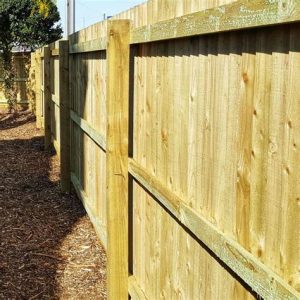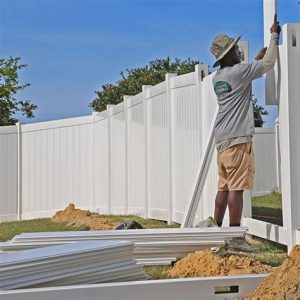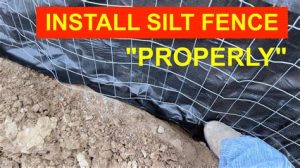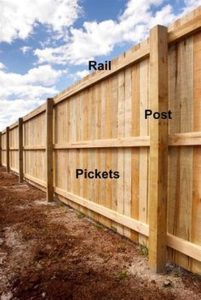When it comes to effective erosion control on construction sites, silt fences are a popular and essential solution. These temporary barriers are designed to prevent sediment runoff, ensuring the environment remains protected during heavy construction activities. However, prospective users often find themselves asking: what is the cost of silt fence installation? In this article, we will explore the various factors that influence installation costs, provide guidance on how to calculate total expenses, and highlight the benefits of using silt fences in your projects. Additionally, we will address common mistakes to avoid during installation, helping you to make informed decisions for your construction needs. Understanding the true value of silt fences can lead to more sustainable practices and enhanced project outcomes. Read on to discover everything you need to know about silt fence installation and its associated costs.
What Is A Silt Fence And Its Purpose?
A silt fence is an essential tool in erosion control and sediment management during construction projects. This temporary barrier, usually made of geotextile fabric, is designed to intercept and filter sediment-laden water, preventing sediments from entering nearby bodies of water. So, what is a silt fence used for? Its primary purpose is to minimize soil erosion and maintain water quality by capturing sediments that would otherwise wash away during rainfall or construction activities.
Silt fences are particularly effective in holding back sediment while allowing water to flow through, which helps to manage runoff during various stages of construction. They serve not only as a physical barrier but also as a means to meet regulatory requirements regarding stormwater management. By utilizing silt fences, construction sites can mitigate pollution to nearby streams, ponds, and lakes, thus enhancing environmental protection.
In essence, the purpose of a silt fence can be summarized as follows:
- Prevent Erosion: It reduces soil loss by capturing sediment before it can be washed away.
- Water Quality Protection: Helps maintain the quality of water by filtering out sediments and pollutants.
- Regulatory Compliance: Assists construction projects in meeting environmental regulations.
- Cost-Effective Solution: An affordable method for sediment control that can save on more expensive remediation efforts later.
Understanding what is a silt fence and its vital role can greatly benefit those involved in construction and landscaping, ensuring that projects are not only efficient but also environmentally responsible.
Factors Influencing The Cost Of Silt Fence Installation
When considering the what is involved in the cost of silt fence installation, various factors come into play. Understanding these elements can help you budget more accurately and ensure effective sediment control. Below are key factors that can influence the overall cost:
Being aware of these factors will not only aid in your budgeting process but also enhance your understanding of the importance of proper installation in erosion control.
How To Calculate The Total Installation Cost?
Calculating the total installation cost for silt fences involves several factors. Below is a comprehensive approach to help you determine the overall expenses involved in the process.
The first step is to identify the length of the area where the silt fence will be installed. This measurement is critical as it directly influences the quantity of materials required and, consequently, the total cost. Once you have the length, consider the following components:
| Cost Factor | Description | Cost Range ($) |
|---|---|---|
| Materials | The price of silt fencing material, including posts. | 0.50 – 2.00 per linear foot |
| Labor | Hiring professionals or paying crew for installation. | 1.00 – 3.00 per linear foot |
| Permits | Any necessary local permits may apply. | Varies |
| Site Preparation | Clearing and preparing the installation site. | 100 – 500 depending on conditions |
After estimating each of these cost factors, sum them up to get the total installation cost. Additionally, it’s wise to incorporate a contingency fund, typically around 10-15% of the estimated costs, to cover any unexpected expenses.
Regularly reviewing your calculations and adjusting for any changes or fluctuations in material and labor costs can help ensure that your project stays within budget.
Benefits Of Using Silt Fences In Construction Projects
Silt fences offer numerous advantages for construction projects, making them an essential tool in erosion and sediment control. Below are some key benefits:
- Effective Sediment Control: Silt fences effectively capture sediment runoff, preventing it from entering nearby waterways and harming the environment. This not only helps maintain water quality but also complies with environmental regulations.
- Cost-Effective Solution: Installing silt fences is a budget-friendly option compared to more complex sediment control systems. They provide a simple yet efficient means of managing erosion without the need for expensive alternatives.
- Easy Installation: Silt fences are relatively easy to install and can be set up quickly on various terrains. This allows construction projects to maintain progress while ensuring compliance with erosion control best practices.
- Flexible Use: These fences can be adapted to different project sizes and site conditions, making them versatile for various construction projects, from residential developments to large infrastructure works.
- Minimal Maintenance: Once installed, silt fences require minimal upkeep. Regular inspections are necessary to ensure their effectiveness, but overall maintenance efforts are reduced compared to other erosion control methods.
As you can see, utilizing silt fences in construction projects not only mitigates what is an often complex problem of sediment control but also contributes positively to project management and compliance with environmental standards.
Common Mistakes To Avoid During Silt Fence Installation
When installing silt fences, avoiding common mistakes is crucial to ensure their effectiveness and longevity. Here are some of the key errors to steer clear of:
- Improper Location Selection: Placing the silt fence in the wrong location can diminish its effectiveness. Always install it at the most strategic point to intercept sediment-laden runoff.
- Incorrect Fence Height: The height of the silt fence must be appropriate for the particular site’s topography and expected water flow. A fence that is too low may not be able to control sediment in heavy rain.
- Poor Attachment to Posts: Ensuring that the silt fence is securely attached to the supporting posts is essential. Loose attachments can result in fence failure during water flow.
- Skipping on Soil Barrier Preparation: Before installing a silt fence, the soil barrier should be compacted. Skipping this step can lead to undermining during heavy rainfall.
- Not Regularly Inspecting the Fence: Regular maintenance checks are critical. Failing to monitor the condition and functionality of the silt fence can result in unforeseen breaches.
- Ignoring Local Regulations: Different regions may have specific regulations regarding silt fence installation. Ignoring these can lead to non-compliance and possible fines.
- Insufficient Training for Installation Crew: Ensure that the installation team is adequately trained and understands the purpose and proper techniques for silt fence installation.
- Neglecting Erosion Control Measures: Implementing additional erosion control measures, such as vegetation, can enhance the effectiveness of silt fences.
Avoiding these common mistakes will help in achieving a successful installation. Thus, when asking What is the best approach for installing silt fences, remember to focus on proper planning and execution for optimal results.
Frequently Asked Questions
What is a silt fence?
A silt fence is a temporary sediment control barrier made of geotextile fabric that is used to capture sediment from water runoff on construction sites.
Why is silt fence installation important?
Silt fence installation is important because it helps prevent soil erosion and protects waterways from sediment pollution during construction or land disturbance.
What factors affect the cost of installing a silt fence?
The cost of installing a silt fence can be affected by factors such as the type of fabric used, the length and height of the fence, labor costs, site accessibility, and local regulations.
How much does silt fence installation typically cost?
The typical cost for silt fence installation ranges from $1 to $2 per linear foot, depending on the aforementioned factors and local market rates.
Do I need a permit to install a silt fence?
In many areas, a permit is required to install a silt fence, especially if it is part of a construction project that disturbs more than a certain amount of land. It’s best to check local regulations.
How long does a silt fence last?
A silt fence is designed to be a temporary solution and typically lasts anywhere from 6 months to a year, depending on environmental conditions and the amount of runoff.
Can I install a silt fence myself?
Yes, a silt fence can be installed by homeowners or contractors with basic DIY skills, but it’s recommended to consult with professionals for proper installation to ensure efficiency and compliance.





